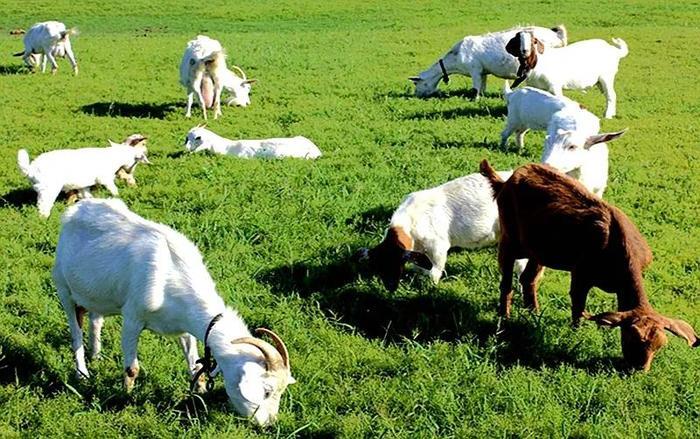1 common high incidence of small-scale sheep farms in the Jinhua area, the major viral disease for small-scale sheep farms are “Foot-and-mouth disease, small ruminant animal disease, sheep pox, contagious impetigo of sheep, viral cold”; Bacterial diseases are mainly “Sheep Colibacillosis, pasteurellosis, streptococcosis; bacteroid diseases are mainly sheep contagious pleuropneumonia (pathogenic: Mycoplasma, also known as Mycoplasma); parasitic diseases are mainly “Intestinal helminthiasis, body surface sarcoptic acariasis, coccidiosis”. In addition, there are Micronutrient deficiency syndrome, adverse stress syndrome, poisoning, and so on.
2 Prevention and Control Strategy to standardize the construction of epidemic prevention facilities in small-scale sheep farms, carry out regular training of epidemic prevention knowledge for staff, enhance the overall epidemic prevention and control ability, and at the same time do a good job in emergency prevention and control of virus, bacteria and parasitic diseases.
2.1 in general, the high incidence of viral disease in sheep occurs in the season with high-temperature fluctuation, especially when the temperature in the small breeding environment is less than 10 °c, the temperature fluctuation between day and night is more than 7 °C and the wind speed is high, most likely to induce a viral cold. From the point of view of etiology, “Low temperature (negative temperature) + High Pollution index + adverse stress factor” is the best external condition for virus survival. Therefore, the primary diseases of animals under cold weather and cold stress are mainly viral.
2.2 in the practice of bacterial and bacteriogenic diseases, bacterial and bacteriogenic diseases occur more frequently under the environmental conditions of “High temperature, high humidity, and pollution”, mainly because of the biological characteristics of pathogens, because “High temperature and high humidity + pollution (organic carrier)” is conducive to bacteria, the bacteria-like proliferation of the external environment conditions. Prevention and Control Strategy: ensure that the current feed water and feed are not contaminated is the key, to properly preserving and using the feed, to ensure that all links are not contaminated by rodents, bacteria-carrying animals, and other pathogens spread; Cleaning and disinfection are the most effective preventive and control measures. Organic matter carriers, such as manure and metamorphic bedding, should be promptly removed from the enclosure, the content of pathogen in the environment should be controlled within the safe range as far as possible, relevant vaccines can be considered in mature sheep farms, and lamb dysentery vaccine can be injected to prevent sheep colibacillosis 20 ~ 30 days before the birth of Ewes, the best way to prevent sheep pasteurellosis is to vaccinate healthy sheep with 2 mL of the vaccine, healthy sheep with 3 mL of the vaccine under the skin, and sheep with 2 mL of the vaccine against Aluminum hydroxide, 2 ~ 3 months old lambs should be immunized once more after 15 days of inoculation, the first choice for the control of the whole group of drugs is to take Chuanxinliansan, Wumeisan and Shuanghuanglian (oral solution/compound Chinese herbal medicine) orally, it should be noted that adult sheep (to establish the ruminant function as the criterion) are forbidden to take antibiotics orally, and only suckling lambs (to establish ruminant) can be treated by taking antibiotics orally The first prescription for the treatment of severe hunger-strike was “Ampicillin sodium or Ceftiofur sodium 0.1 g/(kg body weight) + Shuanghuanglian injection 0.2 mL/(kg body weight) + Houttuynia cordata injection 0.1 mL/(kg body weight)”.
2.3 parasitic diseases. Sheep parasitosis can occur in four seasons due to “Non-separation of livestock and Dung”, excessive pollution of the environment, and high-frequency exposure of sheep. To save money, small-scale sheep farms are usually built simply because of poor conditions. There is no building-type pen for separating livestock and Dung. Control Strategy: timely deworming or regular deworming, small-scale sheep farms in Spring and autumn generally at least 1 time each deworming; deworming preferred broad-spectrum high-effective Avermectin or Ivermectin (high purity), mix material internal, according to drug use instructions continued to feed 2 ~ 3 doses; Building-type sheep houses in small sheep farms where conditions allow the sheep to live on the floor above 1.2 m from the floor of the sheep houses. Minimizing contact with ground pollutants is effective in preventing parasitic diseases Carry out regular cleaning and disinfection of the small environment and utensils in the sheep house, and dispose of the Dung, urine, and bedding materials in the Sheep House through the accumulation and fermentation, etc., the effect of oral antiparasitic preparation is often not good for sheep with acariasis. It is better to take an orally sensitive anthelmintic agent and body surface medicated bath (using mifepristone), and the effect of subcutaneous injection of Avermectin is better.
